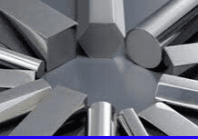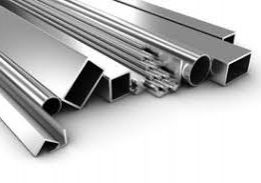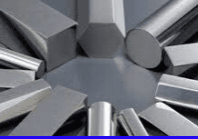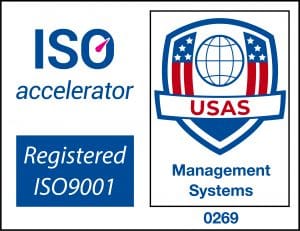Stainless Steel 304



The Qualities of Stainless Steel 304
| Related Specifications | |
| Australia | AS 2837-1986-304 |
| Germany | W.Nr 1.4301 X5CrNi 18 10 |
| Great Britain | BS970 Part3 1991 304S15/304S31 BS970 1955 EN58E |
| Japan | JIS G4303 SuS 304 |
| USA | ASTM A276-98b 304 SAE 30304 AISI 304 UNS S30400 |
Chemical Composition of Stainless Steel 304
The chemical composition of 304 stainless steel typically includes:
| Chemical Composition | ||
| Min. % | Max % | |
| Carbon | 0 | 0.08 |
| Silicon | 0 | 1.00 |
| Manganese | 0 | 2.00 |
| Nickel | 8.00 | 10.50 |
| Chromium | 18.00 | 20.00 |
| Nitrogen | 0 | 0.10 |
| Phosphorous | 0 | 0.045 |
| Sulphur | 0 | 0.03 |
| *Molybdenum option addition. |
Mechanical Properties of Stainless Steel 304
| Mechanical Property Requirements - Annealed to ASTM A276-98b 304 | |||
| Finish | Hot Finish | Cold Finish | Cold Finish |
| Dia or Thickness mm | All | Up to & incl 12.7mm | Over 12.7mm |
| Tensile Strength Mpa Min. | 515 | 620 | 515 |
| Yield Strength Mpa Min. | 205 | 310 | 205 |
| Elongation in 50mm % Min. | 40 | 30 | 30 |
| Typical Mechanical Properties At Room Temperature - Annealed | |||
| Finish | Cold Drawn | Other | |
| Tensile Strength Mpa | 680 | 590 | |
| Yield Strength Mpa | 500 | 240 | |
| Elongation in 50mm % | 42 | 55 | |
| Impact Charpy V J | 190 | 183 | |
| Hardness | HB | 195 | 155 |
| Rc | 13 |
| Temperature oC | 20 | 430 | 550 | 650 | 760 | 870 | |
| Short - Time Tensile Tests | Tensile Strength Mpa | 580 | 425 | 370 | 310 | 205 | 140 |
| Yield Strength Mpa | 240 | 150 | 130 | 115 | 95 | 70 | |
| Elongation in 50mm % | 60 | 40 | 35 | 32 | 33 | 40 | |
| Creep Tests | Stress for % Creep in 10,000 hours Mpa |
115 | 50 | 15 |
| Typical Mechanical Properties - Annealed at Zero and Sub-Zero Temperatures | |||||
| Temperature oC | 0 | -70 | -130 | -180 | -240 |
| Tensile Strength Mpa | 870 | 1000 | 1300 | 1400 | 1650 |
| Yield Strength Mpa | 260 | 300 | 350 | 375 | 450 |
| Elongation in 50mm % | 57 | 50 | 45 | 40 | 30 |
| Impact Charpy V J | 190 | 190 | 185 | 180 | 180 |
Heat Treatment of Stainless Steel 304 |
| Annealing |
| Heat the material to a temperature range of 1020°C to 1100°C, ensuring uniformity throughout the section. Allow the part to soak as needed. Quench it in water to achieve the best corrosion resistance.
The soaking time should be sufficient to ensure thorough heating of the entire section to the specified temperature. As a guideline, a soaking time of 30 minutes per 25 mm of section thickness may be employed. For optimal results, it is recommended to consult your heat treater. They can provide tailored guidance and ensure the best outcome for your specific requirements. |
| Machining |
| 304 with improved machinability is somewhat easier to machine compared to improved machinability grades 316 or 316L. However, it presents greater machining challenges than the free machining grade 303 and most of the 400 series stainless steels. Its typical machinability rating is approximately 55% to 60% of free machining (S1214) mild steel.
Given its high work hardening rate, it's essential to maintain sharp cutting or drilling tools to prevent unnecessary work hardening of the surface. For optimal machining results, adhere to the machine manufacturer's recommendations regarding suitable tool types, feeds, and speeds. |
Welding Stainless Steel 304
| 304 stainless steel can be easily welded using shielded fusion and resistance welding methods, followed by air cooling, which results in good toughness. However, oxyacetylene welding is not advisable due to the risk of carbon pick-up in the weld area.
While small sections can be welded without sacrificing corrosion resistance, larger sections or those intended for use in more extreme conditions may benefit from post-weld annealing to mitigate the risk of intergranular carbide precipitation. |
| Welding Procedure |
| Welding electrodes or rods should be 308 or *similar depending upon the application. No pre-heat or post-heat is generally required.*Please consult your welding consumables supplier. |

